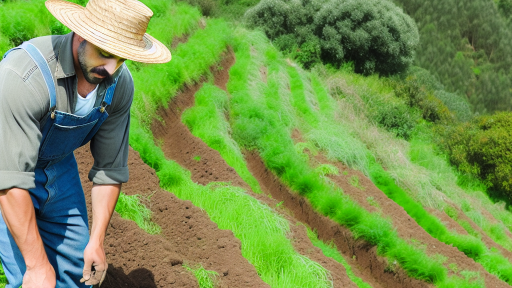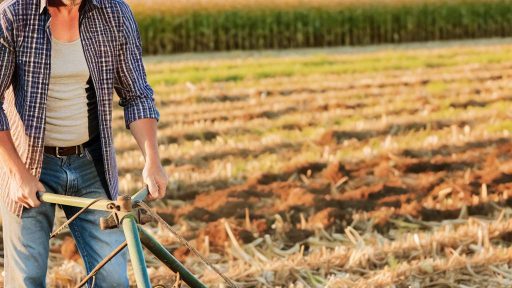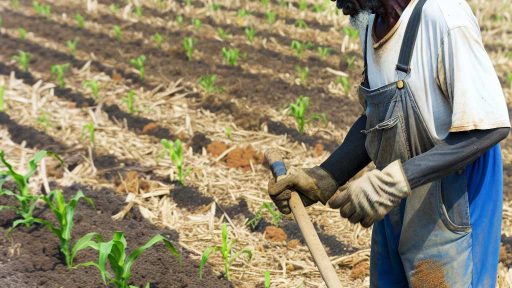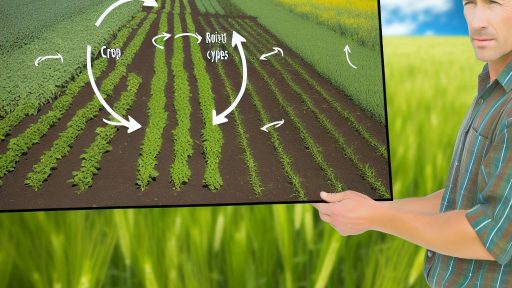Introduction to Permaculture: Principles and Ethics
Permaculture integrates land, resources, people, and the environment.
It emphasizes sustainable practices that mimic natural ecosystems.
Fundamentally, permaculture relies on ethical guidelines to guide actions.
Core Principles of Permaculture
Each principle aims to create a sustainable system for food production.
Observation plays a crucial role in the design process.
For instance, understanding local climate and soil helps optimize growth.
Diversity enhances resilience, making systems less vulnerable to disasters.
So, incorporating multiple crops can significantly improve yield.
Moreover, permaculture promotes minimizing waste through thoughtful design.
This method fosters a natural cycle of nutrients and energy.
Ethical Foundations of Permaculture
Permaculture is rooted in three fundamental ethics.
- Care for the Earth, prioritizing natural ecosystems.
- Care for People, ensuring everyone has access to resources.
- Fair Share, redistributing surplus to support community well-being.
These ethics encourage harmonious relationships within communities.
Furthermore, they guide individuals to act responsibly towards nature.
Designing for Diversity and Resilience
Diverse plantings create a robust environment for growth.
For example, agroforestry systems combine trees, crops, and animals.
Transform Your Agribusiness
Unlock your farm's potential with expert advice tailored to your needs. Get actionable steps that drive real results.
Get StartedThis approach enhances biodiversity and increases soil health.
Additionally, polycultures prevent pest outbreaks and competition.
Matching plants to their natural companions boosts overall productivity.
Assessing Land
Soil Quality
Evaluating soil quality is essential for successful farming.
A soil test can provide critical information about pH levels.
It also reveals nutrient availability to your plants.
Organic matter content improves soil health significantly.
Incorporating compost increases soil fertility and structure.
Additionally, consider the soil texture, which affects water retention.
Conduct regular soil assessments to track changes over time.
Consolidate your findings to inform crop selection and management.
Topography
Understanding the land’s topography influences your farm design.
Gentle slopes can enhance water drainage and prevent erosion.
Identifying low areas helps in managing water runoff effectively.
Map the contours of your land for effective planting strategies.
Use terraces or swales to capture and redirect water flow.
Such techniques also benefit biodiversity by creating diverse habitats.
Monitor how sunlight and wind patterns vary across different areas.
Topographical knowledge aids in selecting the ideal crop locations.
Microclimates
Evaluating microclimates can optimize growing conditions.
These variations occur due to elevation, shade, and wind patterns.
Use trees or buildings to create windbreaks in certain sections.
These barriers can provide warmer conditions for delicate plants.
Recognize areas that receive more sunlight for heat-loving crops.
Showcase Your Farming Business
Publish your professional farming services profile on our blog for a one-time fee of $200 and reach a dedicated audience of farmers and agribusiness owners.
Publish Your ProfileConversely, cooler spots may suit shade-tolerant plants better.
Assessing microclimates enhances overall farm productivity.
By understanding these unique conditions, you can maximize yields.
Designing for Diversity: Companion Planting and Biodiversity
Importance of Companion Planting
Companion planting enhances crop yields and health.
This method uses various plants to support each other.
For instance, certain plants repel pests naturally.
In addition, some enhance nutrient absorption in the soil.
Utilizing combinations can improve biodiversity on the farm.
Plant Combinations for Success
Many plant pairings benefit each other significantly.
Tomatoes, for example, thrive near basil.
Basil helps deter pests like aphids and flies.
Similarly, carrots grow better alongside onions.
Onions naturally repel carrot flies and other pests.
By planning these combinations, you can maximize your yield.
Creating a Biodiverse Environment
Biodiversity provides resilience against diseases and pests.
It involves varying plant species to create a balanced ecosystem.
Planting flowers along vegetable rows attracts beneficial insects.
For example, marigolds are excellent for pest control.
Moreover, you can include cover crops to prevent soil erosion.
Implementing a Permaculture Design
Permaculture principles guide effective farm planning.
One key is to observe natural ecosystems for inspiration.
Use this knowledge to design your planting layout.
Integrate trees, shrubs, and ground cover for optimal growth.
Further, zones of use within the farm boost efficiency.
Practicing Crop Rotation
Crop rotation minimizes nutrient depletion in soil.
Rotating crops prevents the buildup of pests and diseases.
For instance, alternate deep-rooted and shallow-rooted plants.
This practice supports soil health across seasons.
A well-planned rotation leads to a sustainable farm.
See Related Content: Enhancing Pest Control through Crop Rotation Methods
Water Management Strategies
Rainwater Harvesting
Rainwater harvesting captures rainwater for irrigation and other uses.
This technique reduces reliance on traditional water sources.
First, design catchment systems effectively to maximize collection.
Use roofs made of non-toxic materials for optimal results.
Next, install gutters that channel water into storage containers.
Consider using cisterns to store collected rainwater.
Ensure these systems are properly maintained to function efficiently.
Regularly check for leaks or blockages in the system.
Furthermore, integrate this system with your irrigation design.
By doing so, you increase water efficiency across the farm.
Showcase Your Farming Business
Publish your professional farming services profile on our blog for a one-time fee of $200 and reach a dedicated audience of farmers and agribusiness owners.
Publish Your ProfileGreywater Systems
Greywater systems recycle water from baths, sinks, and washing machines.
These systems provide an eco-friendly way to irrigate plants.
First, understand local regulations regarding greywater use.
Next, differentiate between blackwater and greywater systems.
Greywater is generally safer for landscape irrigation.
Install a filtration system to remove contaminants effectively.
Once filtered, distribute greywater to specific areas in your garden.
Utilize drip irrigation systems to minimize evaporation losses.
Regularly monitor the health of plants receiving greywater.
Adjust greywater usage based on plant water needs and regulatory requirements.
Combining Strategies
Integrating both rainwater harvesting and greywater systems enhances sustainability.
This combination maximizes water availability throughout different seasons.
Furthermore, it lowers costs associated with water usage.
Plan for future expansion by considering potential increased water need.
Both systems should complement each other to optimize farm outputs.
Implement regular training for farm staff on these systems.
Educated staff can ensure systems operate smoothly.
Finally, consistently evaluate and adapt your strategies as needed.
Delve into the Subject: Organic Waste Solutions for Modern Farmers
Crop Rotation and Intercropping for Soil Health
The Benefits of Crop Rotation
Crop rotation involves changing the type of crop grown in a specific area over time.
This technique improves soil structure and fertility.
Rotating crops minimizes pest and disease cycles.
As a result, plants are less susceptible to infestations.
Furthermore, it enhances biodiversity in the farming ecosystem.
Implementing Crop Rotation
To implement crop rotation effectively, plan a diverse cropping schedule.
Select crops that belong to different plant families.
Include legumes in your rotation to fix nitrogen in the soil.
Consider seasonal changes when planning your crop schedule.
This will ensure that you’re utilizing available resources wisely.
The Advantages of Intercropping
Intercropping refers to growing two or more crops simultaneously in the same field.
This practice enhances soil health and crop yields.
It creates a synergistic relationship between different plant types.
Consequently, they can benefit from each other’s growth conditions.
Best Practices for Intercropping
Choose compatible crops that have complementary growth patterns.
For example, pairing taller plants with ground cover can maximize space.
Avoid crops that compete for the same nutrients or light.
Additionally, monitor soil health regularly to ensure balance.
Combining Crop Rotation and Intercropping
Combining crop rotation and intercropping can lead to optimal soil health.
This integrated approach enhances nutrient cycling in the soil.
Furthermore, it reduces the need for synthetic fertilizers.
Showcase Your Farming Business
Publish your professional farming services profile on our blog for a one-time fee of $200 and reach a dedicated audience of farmers and agribusiness owners.
Publish Your ProfileFarmers can achieve a more sustainable agricultural system through this method.
Learn More: Drip Irrigation Methods for Sustainable Farming

Implementing Zones: Planning for Energy Efficiency and Accessibility
Understanding Zones in Permaculture
Zones are essential for effective permaculture design.
They help in organizing the space according to the frequency of use.
This organization maximizes efficiency and accessibility for maintenance.
In general, areas closer to your home receive more attention.
Consequently, these zones yield the highest productivity.
Zone One: The Home Zone
Zone One includes the most frequently visited areas.
This zone typically contains a kitchen garden and herbs.
Moreover, you might place chickens or small animals here.
The key is to minimize the distance between resources.
In addition, pathways should be direct and easy to navigate.
Zone Two: The Productive Zone
Zone Two contains plants with a moderate level of interaction.
This zone generates a higher yield than Zone One.
Typically, you’ll find fruit trees or larger vegetable beds here.
Periodic visits maintain plant health and management.
Furthermore, this zone supports companion planting for better yields.
Zone Three: The Crop Zone
Zone Three focuses on larger scale crops.
Farmers plant grains, legumes, and other staple foods here.
This zone requires less frequent attention than the inner zones.
Yet, it plays a critical role in your overall production system.
Additionally, soil improvement practices are implemented here.
Zone Four: The Wild Zone
Zone Four encompasses semi-wild areas that support biodiversity.
You might include native plants, wild foods, or non-cultivated crops.
This zone requires minimal management, fostering nature’s processes.
Connecting with local wildlife enhances ecological value.
Moreover, it serves as a resource for foraging and learning.
Zone Five: The Wilderness Zone
Zone Five is a critical habitat for wildlife conservation.
This area exists with little to no intervention by humans.
Its purpose is to maintain ecological balance and biodiversity.
Visitors may explore this zone to learn about local ecosystems.
Ultimately, this zone supports sustainable farming practices.
Strategic Planning for Energy Efficiency
Effective zoning improves energy efficiency throughout the farm.
By placing high-use areas close together, you conserve time and effort.
Additionally, strategic layout reduces the need for extensive fossil fuels.
Furthermore, carefully planned zones utilize natural resources optimally.
The layout promotes beneficial interactions among different zones.
Enhancing Accessibility in Design
Accessibility is crucial for a successful permaculture farm.
Design pathways that are easy to navigate and well-maintained.
Ensure that all zones are reachable without excessive effort.
Showcase Your Farming Business
Publish your professional farming services profile on our blog for a one-time fee of $200 and reach a dedicated audience of farmers and agribusiness owners.
Publish Your ProfileRemember that good accessibility encourages regular maintenance.
As a result, the entire system functions more efficiently.
Discover More: Maximizing Carbon Storage on Agricultural Lands
Integrating Livestock
Benefits for Soil Fertility
Integrating livestock into permaculture significantly enhances soil fertility.
Livestock manure serves as a natural fertilizer.
This practice enriches the soil with essential nutrients.
Additionally, manure improves soil structure and retention.
Healthy soil fosters robust plant growth and biodiversity.
Moreover, livestock grazing promotes nutrient cycling in the ecosystem.
This cyclical process benefits both crops and livestock.
Pest Control Advantages
Integrating livestock also aids in natural pest control.
Chickens, for instance, are excellent at foraging for insects.
Their presence reduces the population of harmful pests.
Additionally, certain animals deter larger pests like deer.
Using livestock as part of the pest management strategy is sustainable.
This method minimizes chemical pesticide use.
Enhancing Biodiversity
Livestock integration boosts biodiversity on the farm.
Different species interact and create a balanced ecosystem.
Each type of animal contributes uniquely to the environment.
This variety enhances resilience against pests and diseases.
Increased biodiversity further enriches the soil ecosystem.
Creating Sustainable Systems
Permaculture systems thrive on sustainable practices.
Integrating livestock makes the farm more self-reliant.
Animals provide products like meat, milk, and eggs.
These resources create a closed-loop system on the farm.
Moreover, this approach aligns with ecological principles.
Ultimately, it promotes a harmonious relationship between plants and animals.
Seasonal Planning: Maximizing Yield Through Seasonal Cropping Strategies
Understanding Seasonal Cropping
Seasonal cropping allows farmers to optimize plant growth based on environmental conditions.
This technique helps maximize yield by planting crops at the right time.
Understanding local climate patterns is crucial for effective planning.
Assessing Climate and Soil Conditions
Begin by analyzing your local climate zones.
Identify the growing seasons and temperature fluctuations.
Next, assess your soil quality and its nutrient availability.
Testing soil pH and organic matter content can provide valuable insights.
Creating a Crop Rotation Plan
Develop a crop rotation plan for optimal yield.
Rotate crops to reduce pest buildup and enhance soil health.
Consider including legumes to naturally enrich soil nitrogen.
This method also helps diversify yields throughout the seasons.
Implementing Companion Planting
Companion planting can enhance crop performance significantly.
Planting compatible species together improves growth and reduces pests.
Showcase Your Farming Business
Publish your professional farming services profile on our blog for a one-time fee of $200 and reach a dedicated audience of farmers and agribusiness owners.
Publish Your ProfileFor example, tomatoes thrive alongside basil and marigolds.
Additionally, this strategy can maximize space efficiency.
Utilizing Seasonal Succession Planting
Seasonal succession planting increases productivity in limited space.
Plant different crops in succession throughout the growing season.
For instance, follow early spring greens with summer vegetables.
This technique ensures continuous harvests and minimizes fallow periods.
Planning for Climate Resilience
Incorporate climate resilience into your seasonal planning.
Select drought-tolerant and disease-resistant crop varieties.
Implement mulching and cover crops to protect soil moisture.
Furthermore, monitor weather patterns for more informed decisions.
Evaluating Harvest Timing and Techniques
Harvest timing significantly affects crop yield and quality.
Monitor crops regularly to determine the optimal harvest time.
Employ techniques like staggered planting to spread out harvests.
This approach can help manage labor demands during peak times.
Additional Resources
The Three Sisters of Indigenous American Agriculture | National …
How to Sustainably Feed 10 Billion People by 2050, in 21 Charts …




